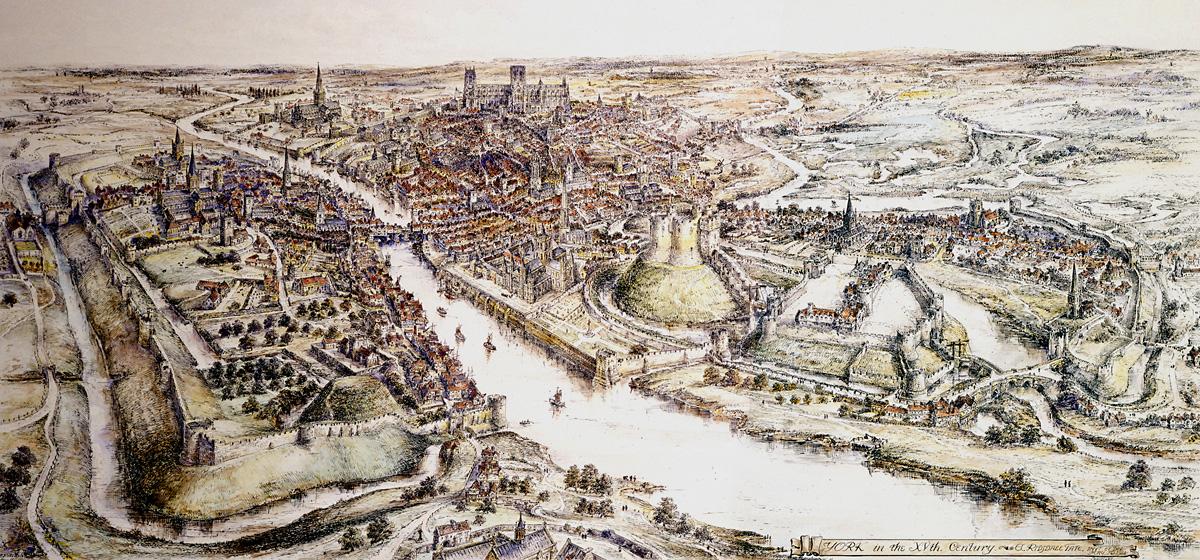The Population of the English Medieval City

In 1377 of the thirty most populous cities and towns in England only three had a population of more than ten thousand people. These were London with forty thousand, York (see picture above) with twelve thousand and Bristol with ten and a half thousand. The others ranged in size from Coventry at eight thousand down to Nottingham and Winchester with two thousand four hundred each.
The whole of the county totalled around two and a half million people. Only a hundred or so years before the population had been almost double this but the Black Death had decimated numbers. Compared to the great cities of continental Europe only London was of similar size. Only twelve percent of the population lived in a town of some kind. This is profoundly different than modern England where some eighty percent live in a town or city.
This isn’t to say that England’s medieval towns and cities were quiet places, far from it.
During the daytime the population of these places could almost double with people from the surrounding rural areas coming to sell their wares and others coming to buy. The inns added to the shifting population, there were travellers of all sorts making use of the accommodation they offered. The towns were vibrant and noisy places.